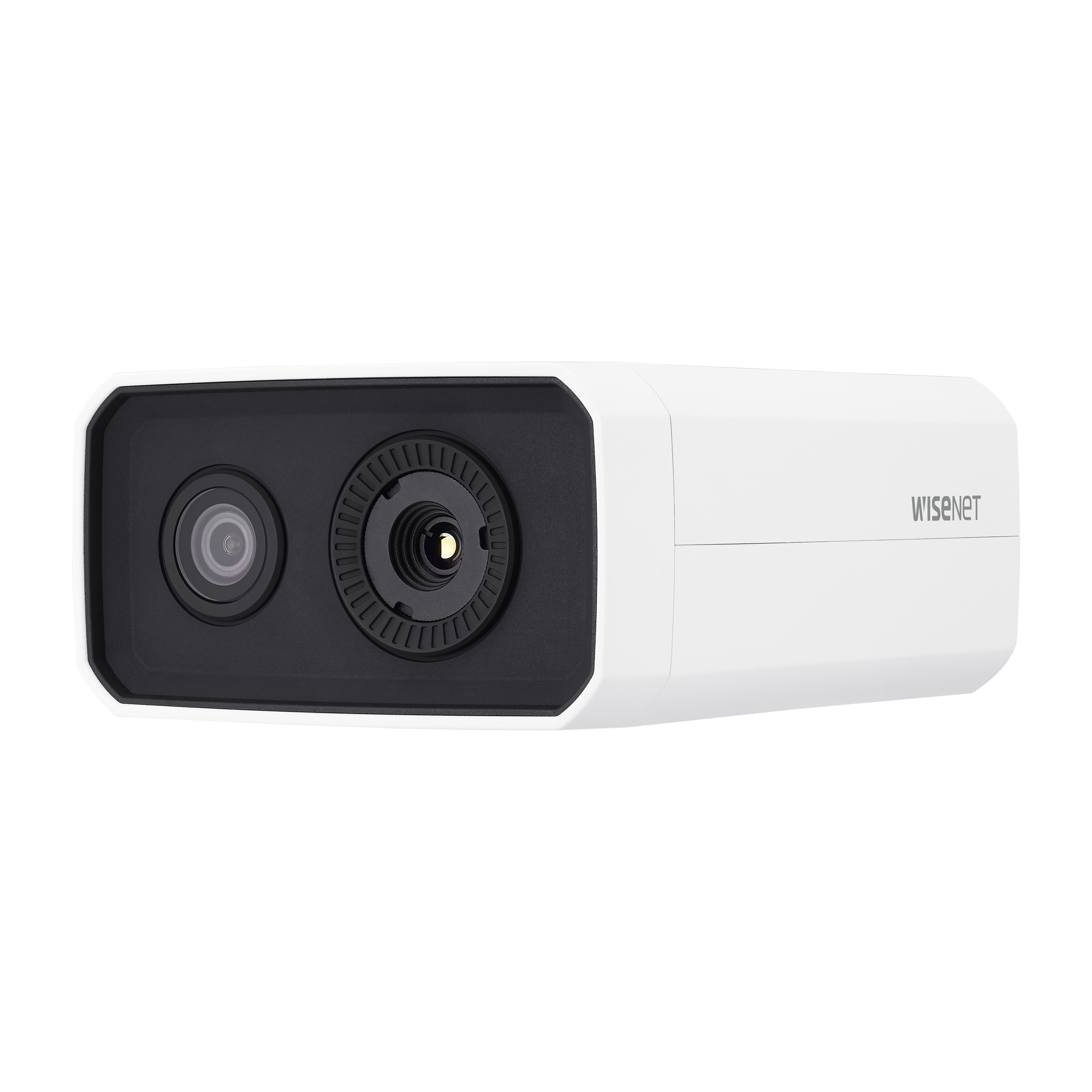
Hanwha Techwin announced the expansion of its line of public health surveillance technologies with the new Wisenet TNM-3620TDY body temperature detection camera.
The TNM-3620TDY offers two detection modes to discreetly scan people entering a facility. When used in estimated body temperature (EBT) mode, the camera’s 2 MP visible light sensor captures and sends AI-based face detection data to its QVGA-class thermal sensor, which simultaneously measures the body temperature of each subject.
According to a company statement, temperature monitoring is accurate to within +-0.3⁰ C when used with a blackbody calibration device, and the camera will trigger audio/visual alarms and notifications when elevated temperatures are detected. An onscreen display indicates a subject’s temperature measurement, and a color-coded indicator is shown over their face.
The camera can also be used as a traditional radiometric device, with the visible sensor providing high-resolution surveillance video to assist in identifying people and activities.
“Business owners and managers of public spaces need flexible options for remaining open and operating efficiently,” said Ray Cooke, vice-president, Products, Solutions, and Integration, Hanwha Techwin America, in a prepared statement. “With this new camera – and all our solutions for occupancy level monitoring, face mask detection and social distancing measurement – Hanwha Techwin gives them a choice of health and safety technologies they can tailor to their operations.”
The camera has a Micro SD/SDHC/SDXC slot which allows up to 256GB of video data to be stored at the edge.
The camera can also connect to a VMS, NVR or Decoder, or be used as a standalone device to comply with healthcare privacy concerns, according to a company statement. The camera’s face detection area can be customized, for example to target the eye region, to prevent false positives from a warm forehead.
The TNM-3620TDY can also complement a facility’s existing COVID protocols, as people with detected elevated temperatures can be discreetly asked to enter a separate screening area for secondary screening with an FDA approved clinical thermometer temperature reading.
Print this page
